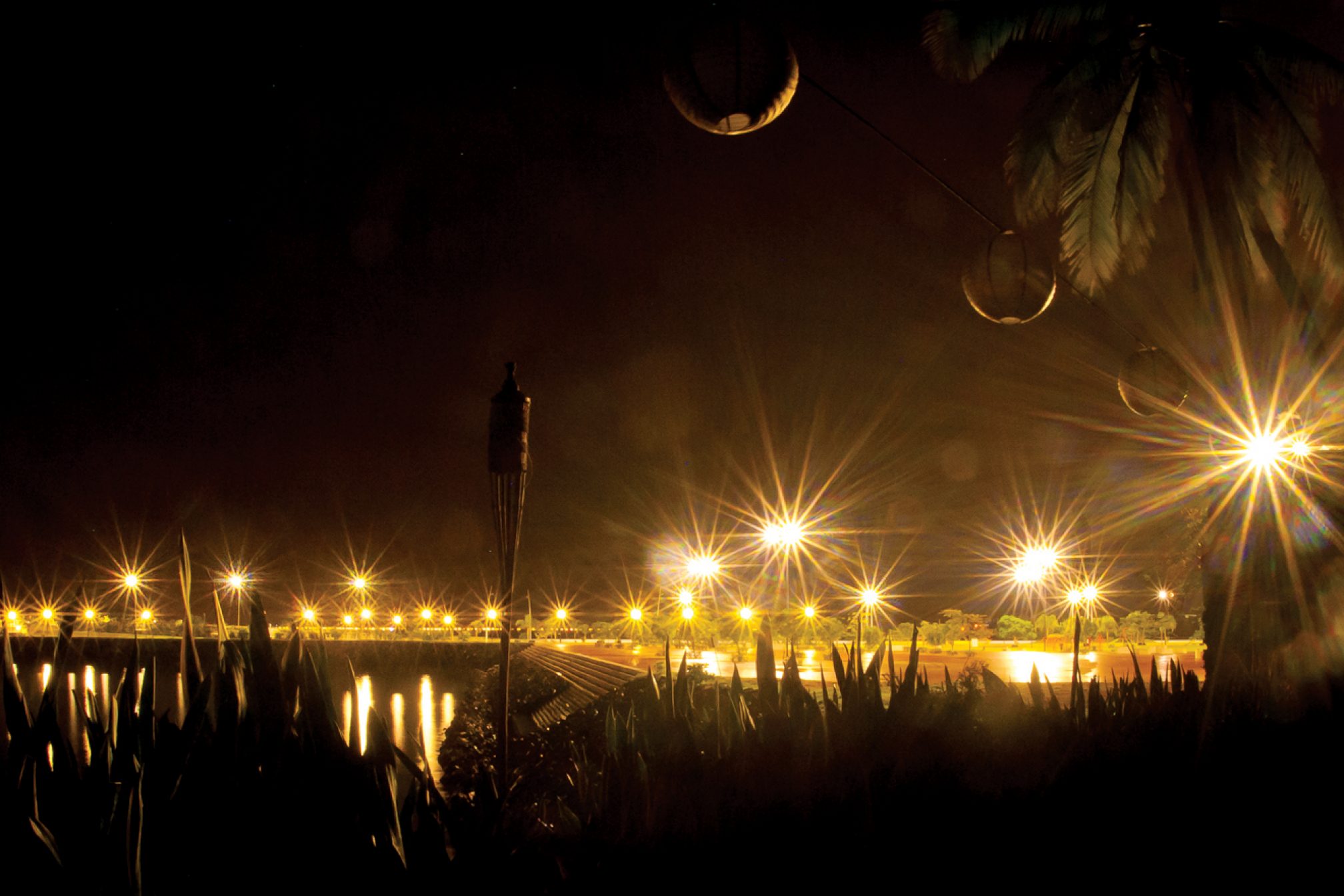 Features
Features
Deep central: Panama and Costa Rica are undergoing a clubbing revolution
Tireless local energy is driving a rise in electronic music's popularity across Central America
It’s barely 9pm, but many of the tower blocks that dominate the skyline of Panama City are dark and lifeless. Apartment buildings with upwards of 40 floors stand silently, pristine on the outside but empty and unlit within, like multi-storey car parks serving the residents of a ghost town. Ground zero for the leak of the Panama Papers, the documents that exposed hundreds of thousands of international tax dodges in 2015, Panama is no stranger to corruption. And as you might expect from a country that contains one of the world’s busiest shipping canals and borders Colombia, the world’s leading producer of cocaine, drug money has found its way in and out of Panama over the years. The high-rise husks looming over its capital are ascribed by some to money laundering operations, just as Florida’s ‘cocaine cowboys’ fuelled an infrastructure boom in Miami in the 1970s and 80s.
At street level, though, Panama City is thriving and alive. The roads roar with traffic, and buses known as diablo rojo or ‘red devils’ – decommissioned US school buses decorated with flashing lights and colourful graffiti depicting everything from religious symbols to Rihanna – catapult residents from A to B at breakneck speed. Some are as empty inside as the apartments above, but this is to make room for dancing. Passengers pile into these party buses at night and they cruise around blasting music and blaring their horns, silhouettes gyrating in the windows amid disco balls. This is a city that likes to get down.
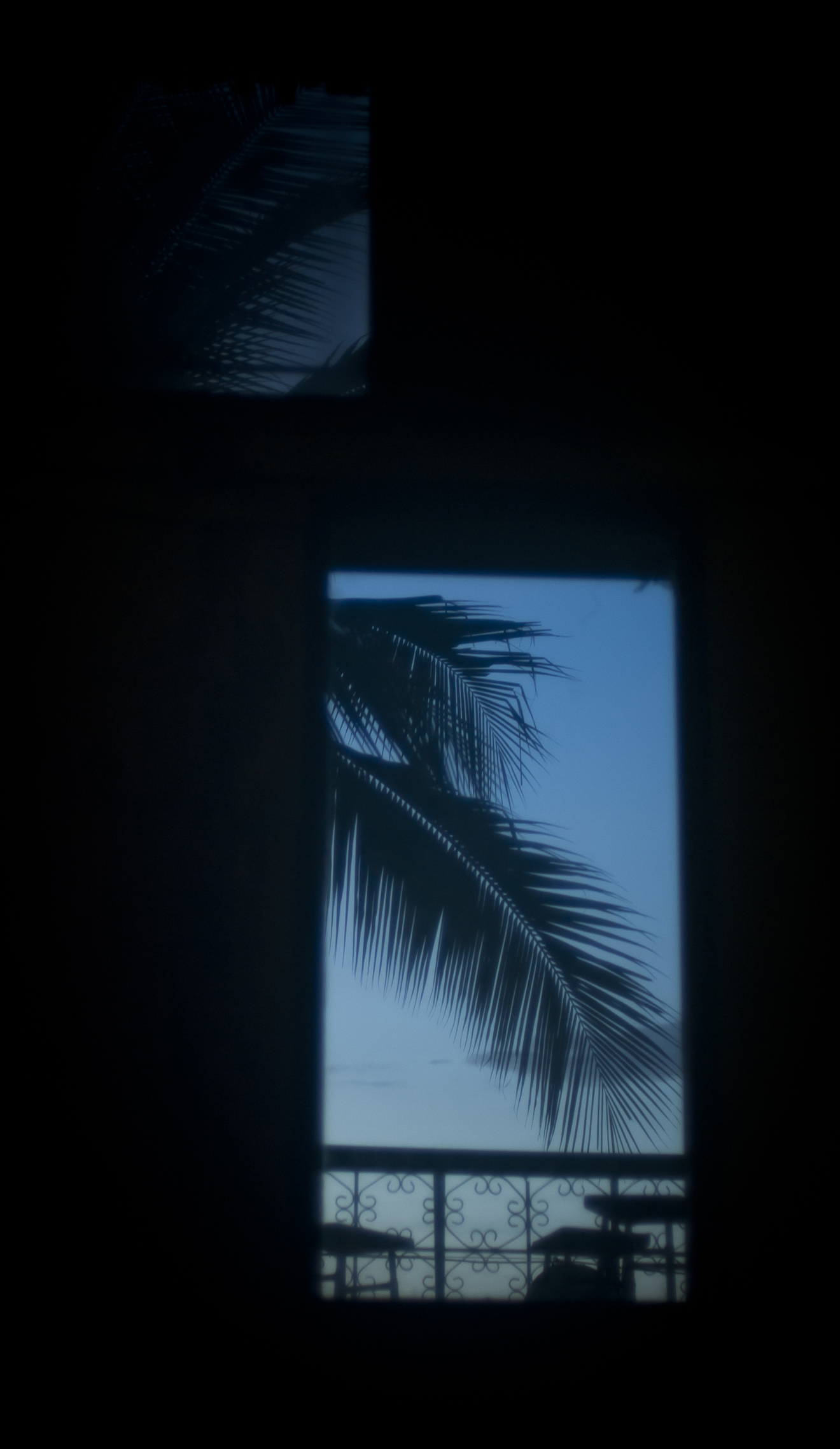
Panama City’s nightlife has long been dominated by Latin music styles such as cumbia and salsa, but an interest in underground sounds is on the rise. At the heart of this development is La Buat, a seafront club in the Casco Viejo district responsible for debuting Enzo Siragusa and Apollonia in the city. Little more than a decade ago this ‘old quarter’ was uninhabitable: a hotbed of gangland activity and drive-bys. But a wave of foreign investment has brought gentrification, and now verdant gardens flourish in its squares and tourists drinking in pricey bars spill onto its pavements, where stray dogs lazily soak up the winter sun. Property values have doubled, tripled, quadrupled – yet despite its booming economy, cultural spending in Panama is negligible. “The arts scene is limited like never before; there is no funding for electronic music here,” says Granvil Kincaid, co-owner of La Buat.
Competing against this cascade of outsider wealth and government frugality is La Buat, the only club wholly owned by Panamanians in the country. David Simons, who DJs as David Berckley, opened the spot in 2013, and last year his compatriot Kincaid came on board. Working together, the duo have been pushing their vision for parties. Beyond bringing Apollonia and Enzo to the country for the first time, La Buat has hosted headline slots from the likes of Alexi Delano, Cesare vs Disorder, Catz N’ Dogz and Yulia Niko. The club is also a strong advocate of domestic talent, with local DJs always featuring on its bills.
“Panama's arts scene is limited like never before; there is no funding for electronic music"
While Kincaid estimates that 85 per cent of parties in the city still exclusively play Latin music, the trend is shifting. Spending a night at La Buat, it’s clear why it’s become the epicentre for Panama’s underground movement. The location, on the edge of Casco Viejo, is charming, with a widescreen view of the Cinta Costera viaduct and islands of Panama Bay. When night draws in the North Pacific tide rises significantly and water laps gently at the edge of the terrace, filling what was previously an eight foot drop onto rocky sea bed. Lanterns glow overhead, fiery torches dance in the wind, and warm red light bathes the dancefloor, from the grand palm tree rooted at the bar’s edge to the balcony where the DJ is set up.
Frankie M, of the Atlanta and LA-based DeepStep Music crew, is tonight’s guest alongside the two owner/residents. Kincaid opens with surging, progressive sounds, sparking an early atmosphere with Innervisions classic ‘Where We At’. Frankie M takes over with trippy deepness courtesy of a Ricardo Villalobos edit of Ruben Blades, moving deftly on to tougher records by the likes of Green Velvet and FJAAK.
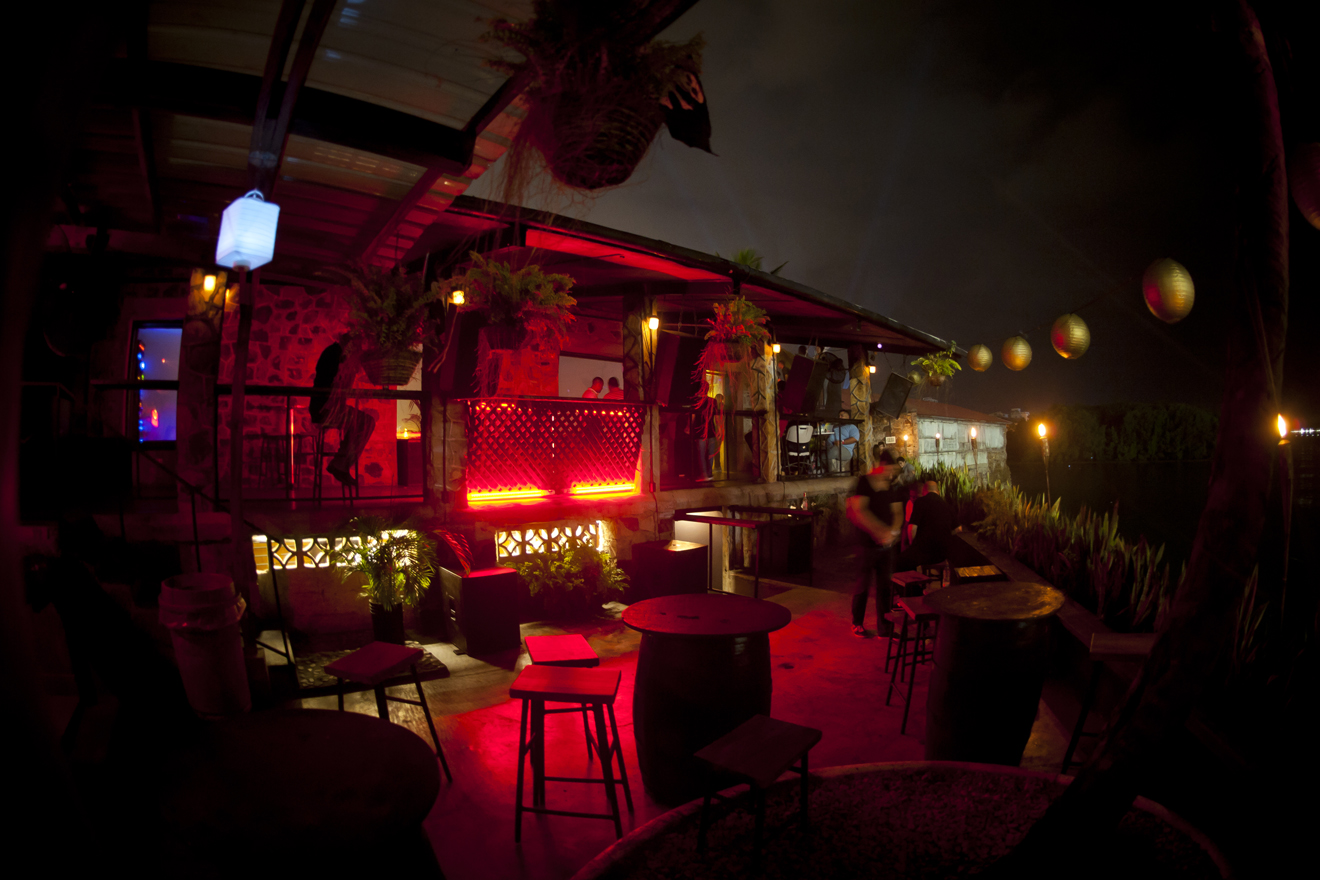
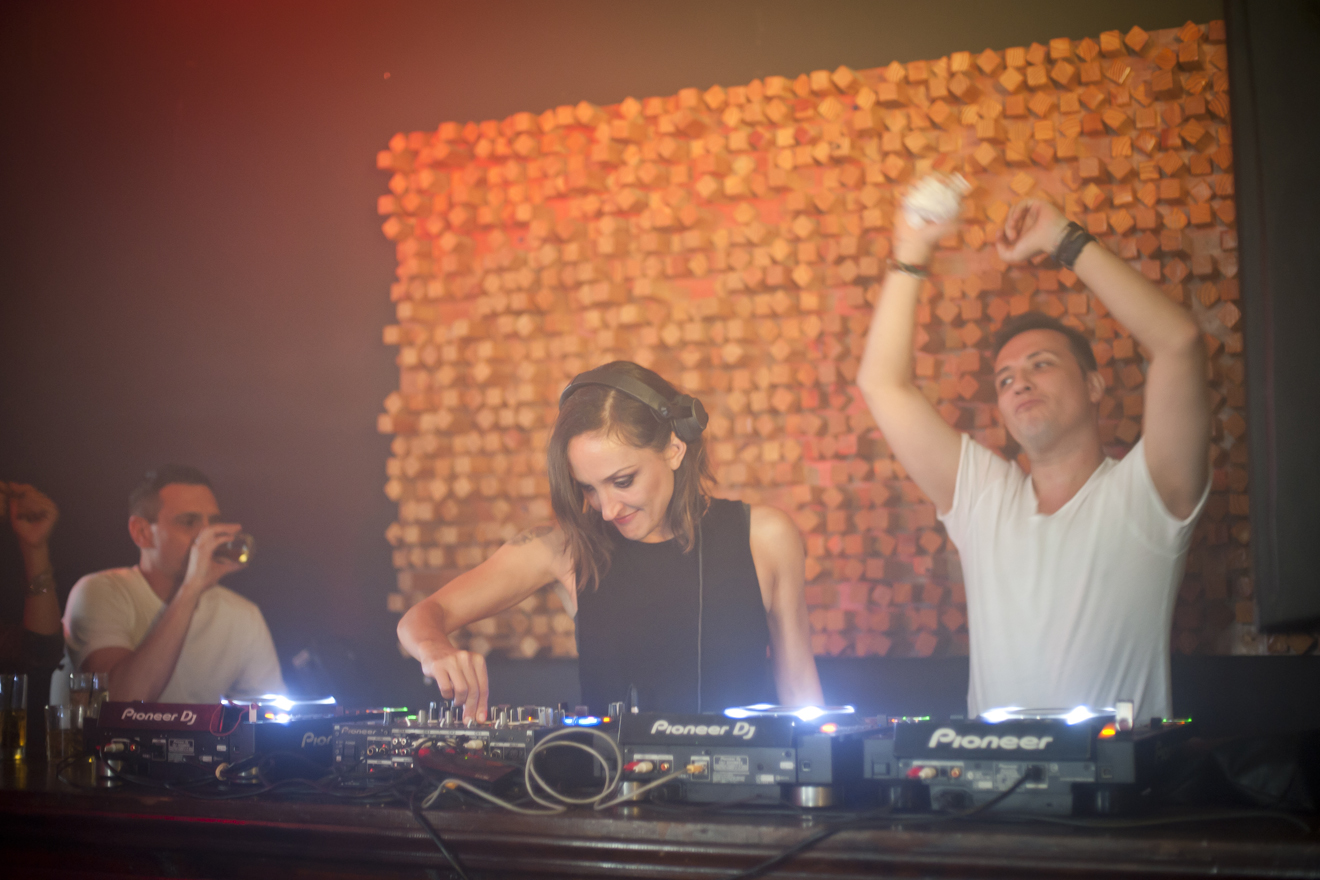
Kincaid studied physics and acoustics at the University of Miami, specialising in sound design. His expertise is evident: even in the outdoor space the sound is weighty, pumping beats flooding out into the night air and combining with a cool breeze to make an irresistible dancing environment. The main room inside is set up to sound good: hefty boards covered in hundreds of wooden blocks are attached to the walls and high ceiling, not only helping to lock in the sound but looking imposing, the wood shaped like jagged quartz crystals. “I could make you puke,” grins Kincaid, describing the soundsystem’s power when notched up to full.
The crowd is fairly lean but fully engaged. There’s a free bar tonight, but surprisingly it receives scant attention. Panama City’s heads are here to listen to the music in the best spot in town, and many stay until closing time, dancing hard as David Berckley powers through to 4am with rolling, chunky selections. At curfew the staff head inside and an afterparty rages on until Mixmag is whisked reluncantly off to the airport.
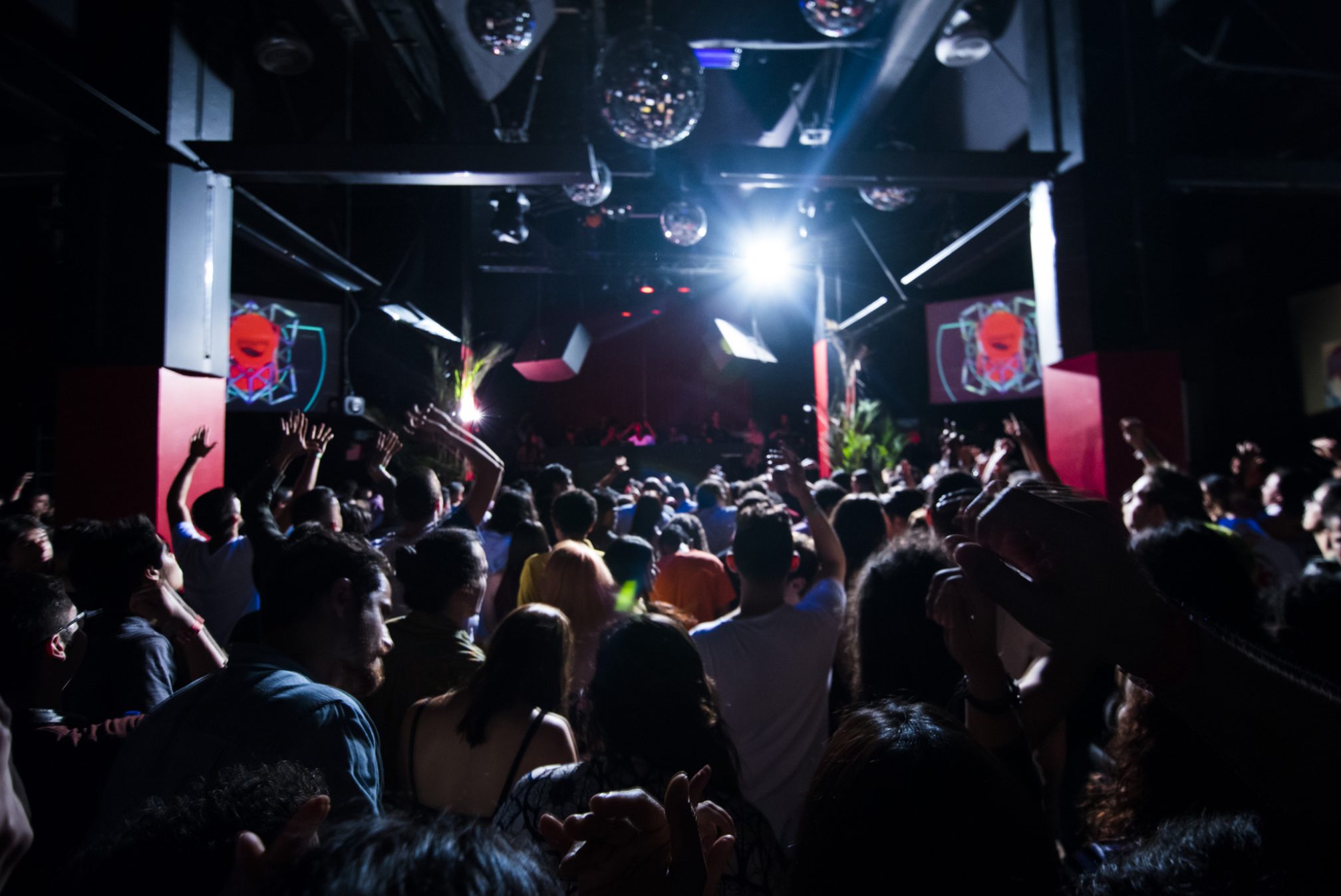
Crossing the border into Costa Rica, the safe and friendly mood of a country that relies heavily on tourism can be felt immediately. “Days without an army: 25,079” (68 years) declares an electronic sign at the landing gate, welcoming guests to Latin America’s first military-free paradise.
The landscape in the capital of San José is distinct from Panama City: less developed, its buildings rarely surpassing two stories, and instead of a sea view there are rolling green mountains stretching beyond the city limits. But the conditions are similarly ripe for growth in the country’s dance music community.
Mixmag stays the week with DJ and production duo Mobius Strum, aka Lenardo Falfan and Eles Lopez, at a breathtaking spot in the mountains surrounded by thick jungle and avocado trees. It’s clear where the couple draw inspiration for the deep, natural-feeling records they’ve released on labels such as Get Physical and Cr2, which immerse listeners in detailed sounds that stretch out like a panoramic vista. Their house is a revolving door for dance enthusiasts, party people and artists from Tamarindo to São Paulo passing through – proof of a healthy, supportive music community that’s felt in the city’s venues, too.
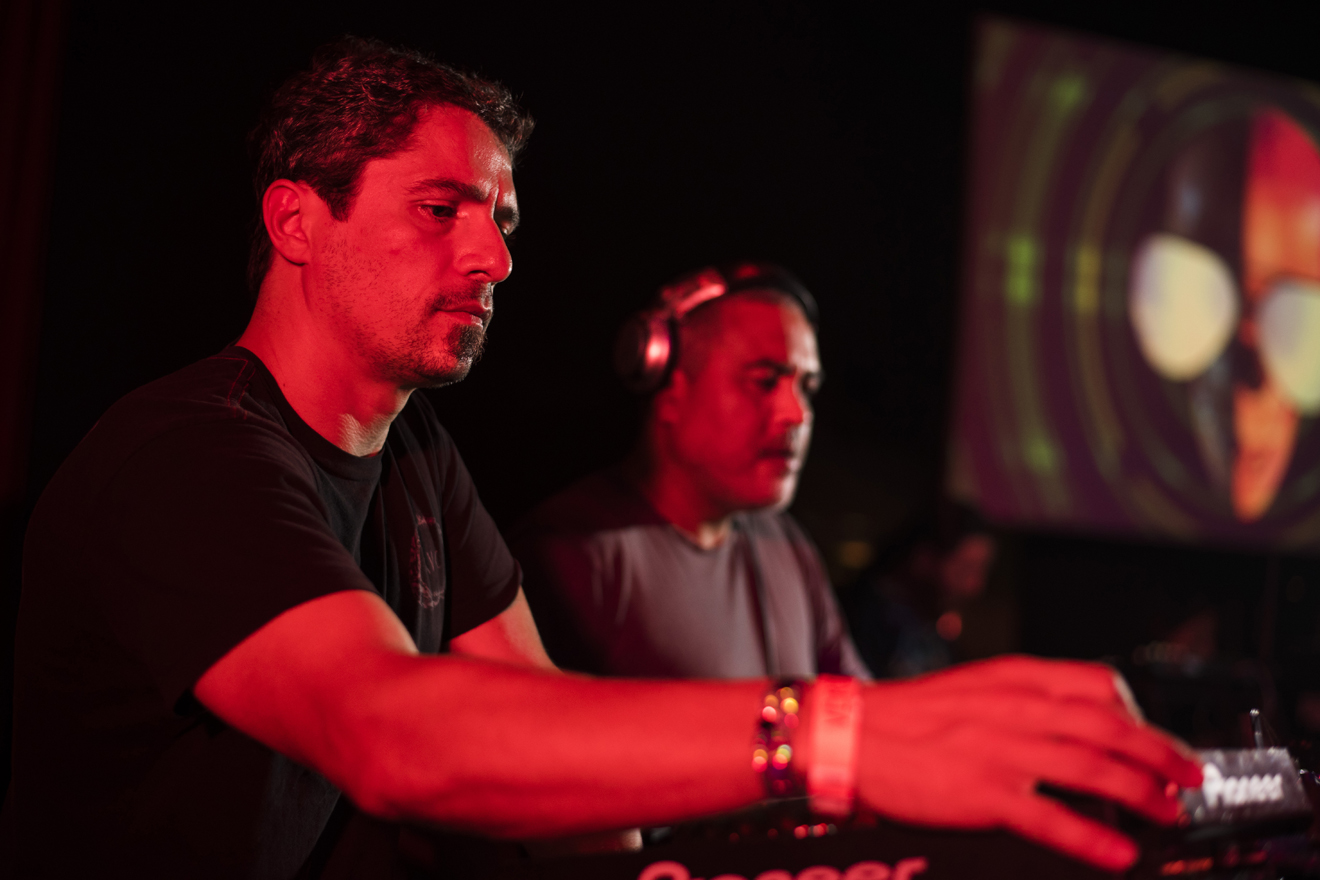
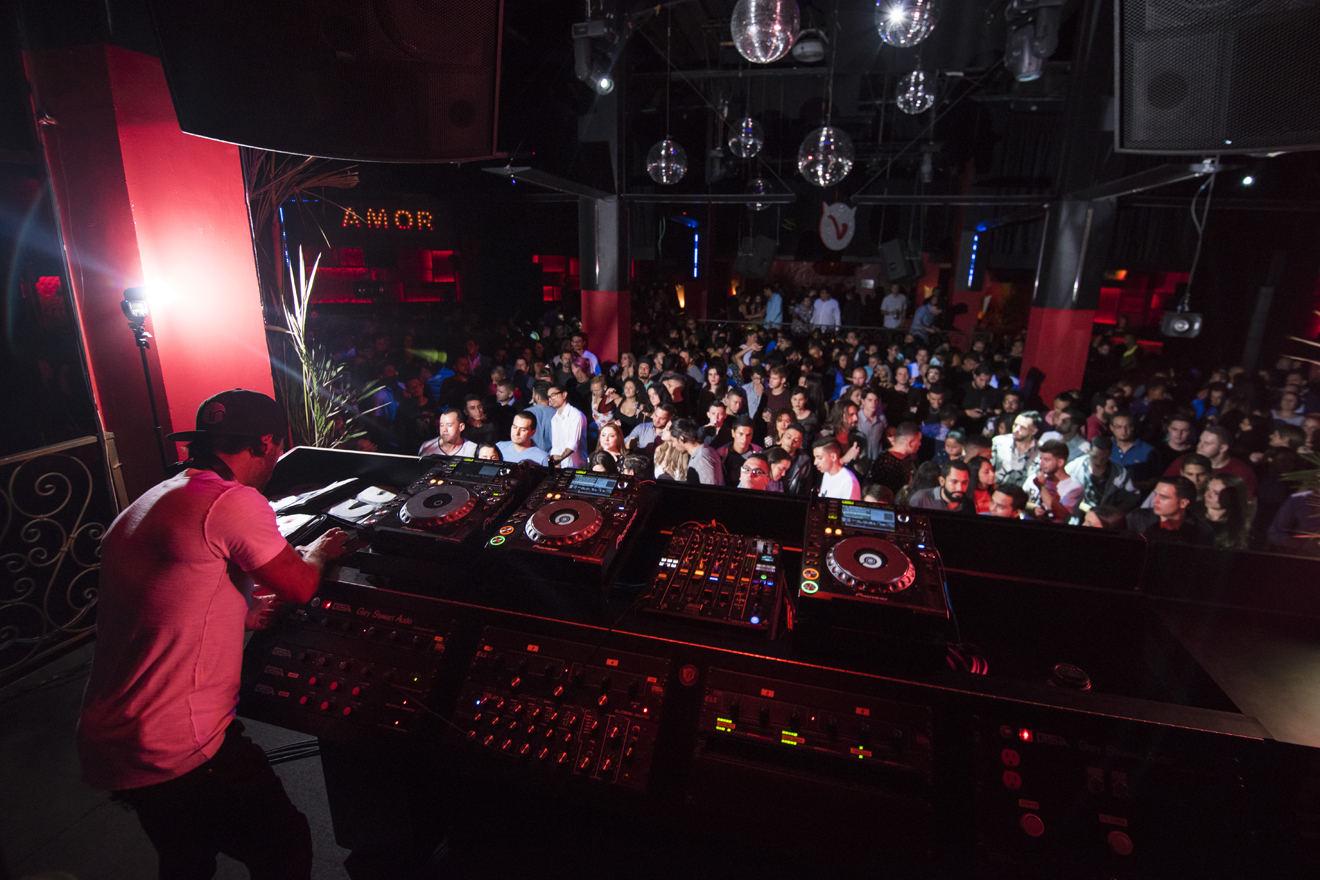
Club Vertigo is San José’s centrepiece, regularly booking the biggest names in the game and boasting a state-of-the-art soundsystem by Gary Stewart Audio. Located within a nondescript, stone-coloured tower, from the outside there’s no inkling of a world-class party. Inside, business units flank brightly lit corridors with squeaky, shopping-centre floors, a curtained opening and queue of people the only indicators of something going on. But once in, we’re struck by the sheer cavernous might of Club Vertigo, bathed in a sultry red colour scheme with pillars punctuating the dancefloor, Vertigo’s devil-shaped logo hanging from a rope, candles bubbling with hot wax and grand ballroom-style curtains draped behind the DJ lending a Twin Peaks vibe. Light bulbs arranged to spell out the word “AMOR” glow in a corner, adding to the steamy atmosphere.
The sound is flawless, and the hypnotic tracks selected by Costa Rican openers Alex Orias and Mauricio de Sostoa entrance the early-birds as trippy visuals are projected in kaleidoscopic flurries of colour on the walls. Cesar Ckamu takes over and ups the ante, and the packed dancefloor filled with young locals in loose-fitting attire becomes a cauldron of energy, hands flying into the air and heads swinging in screwfaced joy.
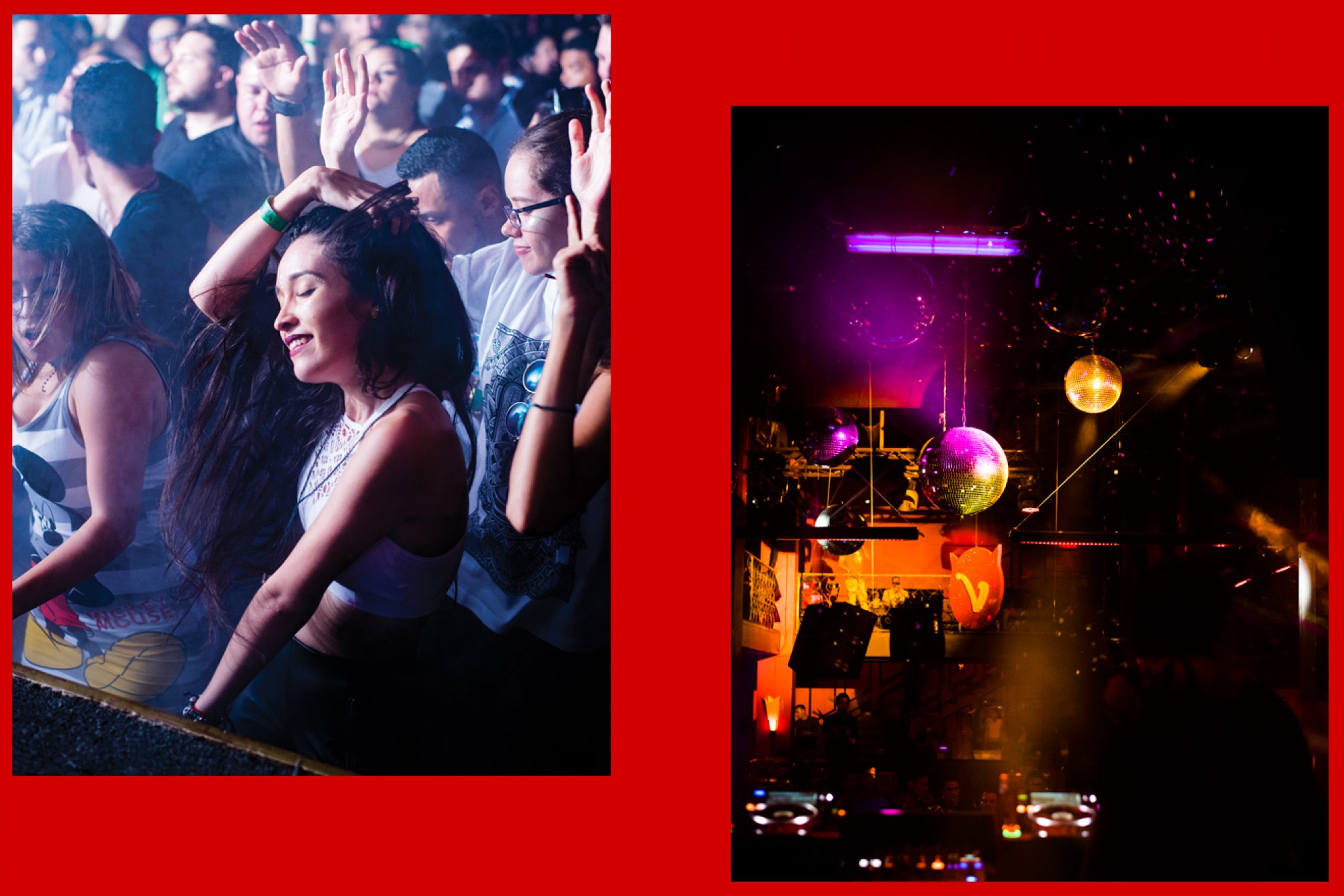
A short taxi ride down the road is Antik, a newer spot which opened here in 2015. From the outside it looks like a huge holiday villa, with white balconies and a rooftop terrace overlooking the street. During the day it serves as a restaurant, but at night it’s transformed into a den of dancing. The marble floors and posh seating areas discoverable in its maze of rooms seem incongruous, given the buzzed crowd careering through its fancy interior.
Upstairs is a room playing Latin music styles, while the basement is reserved for the finest underground talents in the region. Mobius Strum are helming the booth as we arrive, whipping up the dark space with dynamic selections from the likes of Claude VonStroke and Larry Heard. Their energy behind the decks is infectious as they twirl in each other’s arms with jubilant abandon. “Because the electronic crowd in Costa Rica is not very big, the atmosphere is usually very special and warm. People go to parties to listen to the music and enjoy each other’s company, with very positive vibes,” says Eles. A friendly mood permeates the floor, as young dancers go hard until six in the morning. “Music-wise we have nothing to envy well-known clubs all over the world, and sound quality is at a very good level,” say Mobius Strum, who have toured internationally.
It’s clear the scene is being set in Central America for a real rise in dance music’s status, driven by the tireless effort of local mainstays. There are still some limiting factors: the prominence of Catholicism means dance music is taboo in some areas due to the illicit associations that come with partying. But the tide is turning with the shift in generations, and the communal spirit is palpable. Sizable festivals take place in Panama, Costa Rica, Nicaragua and Honduras with a heavy focus on Central American artists, and producers in the region regularly collaborate. Gradually, as the locals’ work pays dividends, these countries are opening up not only domestically, but increasingly as international destinations.
Music-wise we have nothing to envy well-known clubs all over the world"
Icelandic promoter Carmen Jóhannsdóttir, who’s been throwing parties under the name Taktfakt in her home country since 2011, sees the potential in Central America, and is now joining forces with the owners of La Buat to throw a festival on a Panamanian island early next year. The location, a disused bunker previously used by notorious dictator Manuel Noriega, is filled with stark, maze-like rooms, while the exterior boasts incredible views of Panama City.
“It feels very pure here,” says Carmen. “It’s fresh – people are discovering electronic music and themselves at the same time. In a few years, South and Central America will be one of the most popular locations for international artists, promoters and partygoers.” The festival will be a zero waste event, leaving no trace on the pristine tropical environment, and will showcase a range of Icelandic and Central American artists. Reflecting on this combination, Carmen grins: “It’s hot meets cold. Guaranteed to be steamy!”
This feature is taken from the November issue of Mixmag
Patrick Hinton is Mixmag's Digital Staff Writer, follow him on Twitter


